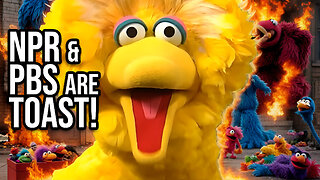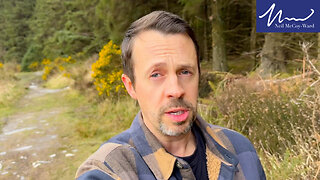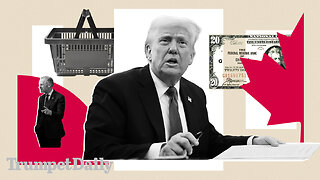Premium Only Content

top tourist attraction to visit in west Bengal - India
top tourist attraction to visit in west Bengal - India
West Bengal, state of India, located in the eastern part of the country. It is bounded to the north by the state of Sikkim and the country of Bhutan, to the northeast by the state of Assam, to the east by the country of Bangladesh, to the south by the Bay of Bengal, to the southwest by the state of Odisha, to the west by the states of Jharkhand and Bihar, and to the northwest by the country of Nepal.
West Bengal has a peculiar configuration; its breadth varies from 200 miles (320 km) at one point to hardly 10 miles (16 km) at another. Its roughly 1,350-mile (2,200-km) frontier with Bangladesh, neither natural nor well defined, is of strategic importance. Although in area West Bengal ranks as one of the smaller states of India, it is one of the largest in population. The capital is Kolkata (Calcutta). Area 34,267 square miles (88,752 square km). Pop. (2011) 91,347,736.
The majority of West Bengal’s people live in rural villages. Of those living in urban areas, more than half reside in greater Kolkata.Of the different religions, Hinduism claims the adherence of more than three-fourths of the population. Most of the remainder is Muslim. Throughout the state, Buddhists, Christians, Jains, and Sikhs constitute small minority communities.
Bengali, the main language of the state, is spoken by much of the population. Other languages include Hindi, Santali, Urdu (primarily the language of Muslims), and Nepali (spoken largely in the area of Darjiling). A small number of people speak Kurukh, the language of the Oraon indigenous group. English, together with Bengali, is the language of administration, and English and Hindi serve as lingua francas at the national level.
Cultural life
Bengalis have long fostered art, literature, music, and drama. The visual arts have, by tradition, been based mainly on clay modeling, terra-cotta work, and decorative painting. Bengali literature dates to before the 12th century. The Chaitanya movement, an intensely emotional form of Hinduism inspired by the medieval saint Chaitanya (1485–1533), shaped the subsequent development of Bengali poetry until the early 19th century, when contact with the West sparked a vigorous creative synthesis. The modern period has produced, among others, the Nobel Prize-winning poet Rabindranath Tagore (1861–1941), whose contribution still dominates the Indian literary scene.
Chaitanya
Chaitanya
Chaitanya, statue in a temple in Māyāpur, West Bengal, India.
Gaura
Traditional music takes the form of devotional and cultural songs. Rabindra Sangeet, songs written and composed by Tagore, draw on the pure Indian classical as well as traditional folk-music sources, including the Baul singing genre. They exert a powerful influence in Bengali cultural life.
Baul singers
Baul singers
Baul singers in Shantiniketan (Bolpur), West Bengal, India.
ptwo/Girish Kulkarni and Nishita Desai
The theatre is popular, and performances—amateur as well as professional—are sophisticated. Yatras (jatras), traditional open-air performances that may treat mythological and historical topics or contemporary themes, are popular both in the countryside and in urban areas. The kavi is an impromptu duel in musical verse between village poets. The kathakata, a religious recital, is another traditional form of rural entertainment, based on folklore.
The film industry is a well-established modern form of popular entertainment. Bengali films have earned national and international awards for their delicate handling of Indian themes; the works of the directors Satyajit Ray, Tapan Sinha, Mrinal Sen, and Aparna Sen are particularly notable.
-
 0:59
0:59
PewView
19 hours agoFound grandpas stash! 😂
67 -
 21:00
21:00
Clownfish TV
16 hours agoNPR and PBS are SCREWED! They're Getting DEFUNDED?!
69912 -
 34:44
34:44
LFA TV
4 days agoMIRACLES DO HAPPEN!
29.4K -
 LIVE
LIVE
TonYGaMinG
1 hour ago🟢 KHAZAN THE FIRST BERSERKER PART 2 #RumbleGaming
80 watching -
 19:08
19:08
Neil McCoy-Ward
20 hours agoHistory Is Repeating (Get Your House In Order NOW!)
7423 -
 38:02
38:02
The Rich Dad Channel
18 hours agoSuccessfully Scale & Exit Your Business - Tom Wheelwright, Colin Campbell
1.06K -
 10:33
10:33
Cooking with Gruel
20 hours agoSmall Farm Chicken
4792 -
 11:22
11:22
Chrissy Clark
20 hours agoMaking America CLEAN Again I South Dakota Vlog
4685 -
 17:25
17:25
Chris From The 740
4 hours agoThe Cyelee Chameleon: Finally! A Red Dot for Astigmatism!
761 -
 1:00:11
1:00:11
Trumpet Daily
23 hours ago $2.95 earnedCanada Aims to Inflict as Much Pain as Possible on Americans - Trumpet Daily | Mar. 28, 2025
2.41K11